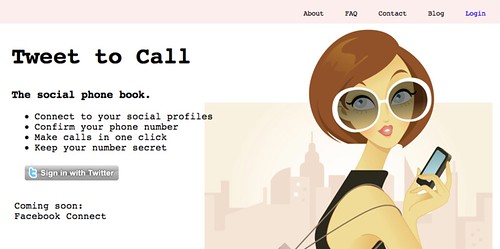-
What’s Saving Europe’s Startups?
Originally published as a guest post on TechCrunch Europe.
 I’ve been in London for only a short period but I’ve already met with dozens of people from the various corners of the local start-up scene. It’s clear the ingredients necessary to build a thriving startup community are in place. Sparks are flying as companies form, events take place every night, and the promise of what’s been dubbed ‘Tech City’ and the more original ‘Silicon Roundabout’ takes shape. Still, it’s clear few major European success stories have emerged in the past few years to compare with Skype’s $2.6 billion exit to Ebay in 2005, leaving many people asking if European startups need something more to fan the flames.
I’ve been in London for only a short period but I’ve already met with dozens of people from the various corners of the local start-up scene. It’s clear the ingredients necessary to build a thriving startup community are in place. Sparks are flying as companies form, events take place every night, and the promise of what’s been dubbed ‘Tech City’ and the more original ‘Silicon Roundabout’ takes shape. Still, it’s clear few major European success stories have emerged in the past few years to compare with Skype’s $2.6 billion exit to Ebay in 2005, leaving many people asking if European startups need something more to fan the flames.Perhaps hoping to do just that Prince Andrew, Duke of York, visited Clerkenwell’s White Bear Yardthis week to lead a roundtable discussion with several startup CEOs. Prince Andrew’s visit was part of a wider planned tour of East London, and the Prince was accompanied by Eric van der Kliej of United Kingdom Trade & Investment (UKTI), CEO of the ‘Tech City Investment Organisation’. The discussion primarily covered the challenges and needs of local startups, and founders were repeatedly asked, “What do you need? What is the fuel that will help take this self-sustaining community to the next level? How do we help you grow?â€
As YCombinator founder Paul Graham wrote in his recent essay Why Startups Hubs Work:
“The problem is not that most towns kill startups. It’s that death is the default for startups, and most towns don’t save them. Instead of thinking of most places as being sprayed with startupicide, it’s more accurate to think of startups as all being poisoned, and a few places being sprayed with the antidote. Startups in other places are just doing what startups naturally do: fail. The real question is, what’s saving startups in places like Silicon Valley?â€
Graham’s essay identifies two fundamental requirements for successful startup hubs: a environment where being in a startup is the cool thing to do, and increased odds that startups will have a chance meeting with someone who can help them.
Fostering a Culture of Success
In the past 6 months, there has been an explosion of highly visible startup activity as exciting new companies launch, new coworking spaces open, new VC funds are raised, UK Trade & Investment champions Tech City, and companies raise some mammoth rounds of funding. It seems everywhere you turn there is a startup event taking place.
 Clockwise from left: Eileen Burbidge (Passion Capital), HRH Prince Andrew Duke of York, Stefan Glaenzer (Passion Capital), Robert Dighero (Passion Capital), Alistair Hill (OnDevice Research), Jason Trost (Smarkets), Victor Henning (Mendeley), Alexandra Chong (Luluvise), Tim Morgan (Picklive), James Gill (GoSquared)
Clockwise from left: Eileen Burbidge (Passion Capital), HRH Prince Andrew Duke of York, Stefan Glaenzer (Passion Capital), Robert Dighero (Passion Capital), Alistair Hill (OnDevice Research), Jason Trost (Smarkets), Victor Henning (Mendeley), Alexandra Chong (Luluvise), Tim Morgan (Picklive), James Gill (GoSquared)A few have been quick to point out to me that they don’t see how the royal family could possibly help tech entrepreneurs. However, could it be that Prince Andrew’s visit yesterday provides precisely the kind of high profile activity needed to take startups mainstream in London? Some might call this “success theaterâ€, something Silicon Valley is expert at manufacturing, but might we also consider it good marketing?
Bringing greater attention to what’s happening here in London sheds light on many stories yet to be told, both positive and negative, about a community that has been built organically by extremely dedicated community leaders determined to make this a desirable hub for startups and innovation.
“If there’s one thing I’ve learned, it’s that startups certainly aren’t one size fits all,†Prince Andrew said, after asking each entrepreneur what would increase their startup’s chances of success. Among the responses: more emphasis on computer science in schools, more readily available investment dollars for early stage companies, tax benefits for those struggling to build new ventures, and more attention paid by the media to what startups are doing.
Instead of being regarded as strange for choosing the startup path, one participant remarked that is would be great to spread the message that working on startups is worthwhile and cool. “You are cool!†said Prince Andrew, “You are forward thinking, making something of life as it is today.†This sentiment of making the most of life as it is today resonates strongly with a speech Prime Minister David Cameron made early last week, calling on Britain to adopt and attitude of “can-do optimism†in the face of economic downturn.
You’re Winning, Now Tell the World
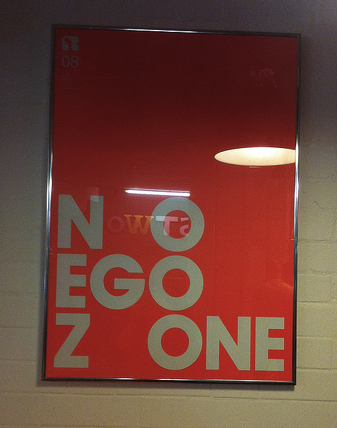 I’ve been asked to compare Silicon Valley to Silicon Roundabout more times than I can count over the past week. One thing that motivates me is reading about friend’s companies in the news. Silicon Valley tech press keep up a steady drumbeat of storytelling covering hundreds of startups and larger technology companies, fueled by a combination of PR, investigative journalism, and good old fashioned tips.
I’ve been asked to compare Silicon Valley to Silicon Roundabout more times than I can count over the past week. One thing that motivates me is reading about friend’s companies in the news. Silicon Valley tech press keep up a steady drumbeat of storytelling covering hundreds of startups and larger technology companies, fueled by a combination of PR, investigative journalism, and good old fashioned tips.People seem quick to refer to the echo chamber we enjoy in the Bay Area as something uniquely American, telling me that its not very British to brag about accomplishments and that it simply won’t work here. Isn’t this just a lot of noise, my new friends ask. Isn’t it true that many of these companies are fluffy, flighty, and ultimately fail? Well yes, but we’re okay with that.
While the startup press may be a bit of an echo chamber, it is encouraging to read stories of other people like ourselves finding success. Even stories of grappling with challenges or facing failure are inspiring for the readers, and often cathartic for the company involved. If there is one thing can may be presumptuous enough to suggest London startups can learn from Silicon Valley companies, it is how to make sure the world knows when they’re winning, and to realize that they are telling these stories on behalf of the entire community. Whether its tipping off the tech press (tips@techcrunch.com) or self-publishing, companies who work to get their stories heard are the ones who get covered, and have the opportunity to provide inspiration.
“The London tech scene needs heroes,†explained Tim Morgan, CEO of Picklive, a social gaming startup for sports fans. “When was the last time you heard of someone who made millions on options? We need people we can look up to.â€
Creating an echo chamber in the press isn’t just noise for its own sake. Startups who are written about in notable press outlets help project a more legitimate image for their businesses that helps close sales, land partnerships, and hire great employees. Not only does this help individual startups, it elevates the awareness and respectability of the startup community as a whole. This market is far from a zero sum game, one startup winning more doesn’t mean others are winning less… instead the story told to the broader mainstream audience ought to be that overall startups are winning, and more people should join in.
Make Your Own Luck
The second part of the criteria for startup hubs that work is increasing the odds that you’ll run into people that can help you. Please don’t be the hundredth person to tell me that this isn’t California and that it just doesn’t happen here. There are people all around you, every moment, who can help you. I’ve met them, they’re real and amazing warm, welcoming, and incredibly generous with their time.
Graham’s essay continues:
“Chance meetings produce miracles to compensate for the disasters that characteristically befall startups. In the Valley, terrible things happen to startups all the time, just like they do to startups everywhere. The reason startups are more likely to make it here is that great things happen to them too.â€
The luck startups need can be manufactured (or at least nurtured), just like the culture of success. If what we discussed before was “success theater†this second criteria requires startups to force density to increase the chances of running into someone who can help, by surrounding themselves with people who are pre-disposed to help startups. Companies are trading their home offices for coworking spaces where they can network with other teams, founders are trading their Wednesday at the pub for a technical meetup where they can recruit developers, and Tech City is working to foster a great density of startups and entrepreneurs in East London.
The potentially uncomfortable corollary is that startups need to stop spending time with people who don’t believe that their dreams can ever be real, and replace them with people who are cheering for them and want their success as much as they do.
There are incredible opportunities for startups in London, but it is up to founders and startup employees to leverage these resources to derive every possible benefit for their companies. For those of us serving and observing the market and figuring out how to enter it, we can help spread the stories and faciliate the introductions that make success and luck possible for everyone.
Prince Andrew Visits the StylistPick Offices
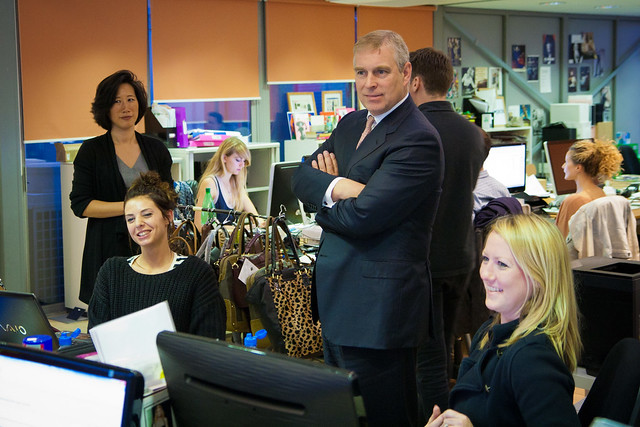
White Bear Yard Startup CEOs
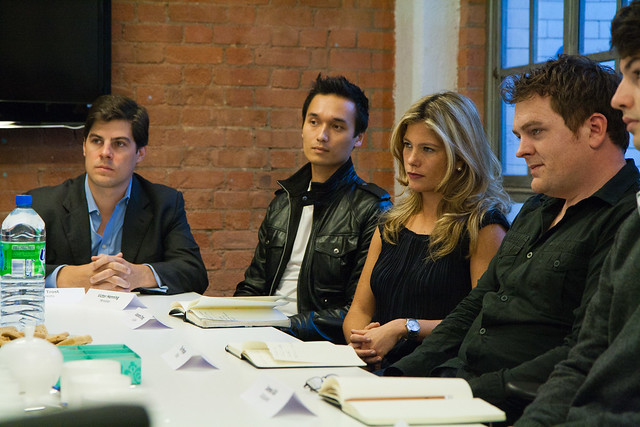
-
Doat.com aka Do@ is the Future of the Mobile Browser [TechCrunch Disrupt]
 Yesterday at TechCrunch Disrupt Day #1 I didn’t “get” Do@, and I think this was mostly because I was put off by the graffiti branding. Â Not sure why, just a personal preference, but its amazing how powerful that first impression is. Â Then, I found out Cathy Brooks is leading marketing there, which got my attention because she is a tough woman, great story teller, and super connected. Â I just sat down after talking to their CTO and downloading and playing with the app, mind blown, to write this post in the back row.
Yesterday at TechCrunch Disrupt Day #1 I didn’t “get” Do@, and I think this was mostly because I was put off by the graffiti branding. Â Not sure why, just a personal preference, but its amazing how powerful that first impression is. Â Then, I found out Cathy Brooks is leading marketing there, which got my attention because she is a tough woman, great story teller, and super connected. Â I just sat down after talking to their CTO and downloading and playing with the app, mind blown, to write this post in the back row.Disrupt is a strange event, because you can see the future of mobile search in one moment, and then walk into the room as an entrepreneur talks about getting kids to “do butt art”. Â But I digress…
UPDATE: What IS Do@?
Do@ is an iPhone application that lets you search across publishers for content you care about in a mobile context. You enter something like “French” and it autocompletes with things like “French Food @ internet” or “French @ books”. When you select a result, you can horizontally scroll through pages of content to pick what you want. It’s like clicking through the top 10 Google results, except minus the clicking and plus the beautiful touch interface of the iPhone.
What’s with the name “Do@”?
I didn’t ask this, but I should have. Â It’s impressive that the company landed a four letter domain name, so I wonder if they did that first and then tried to rationalize it with the branding. Â My best guess is that the concept around the brand/name is that mobile search isn’t about consuming a lot of information, its about approaching “perfect information” or the right information for my context. Â Something cool about mobile app usage is that it always happens in a place, and on smartphones the app can get this location data without even syncing something like Foursquare or Facebook Places.
One other note on the name – it kind of reminds me of the SEO problems with “Ke$ha” (the music artist), but I’m an early adopter type and the general public might not care, or might actually dig it. Â We’ll see. Â It will certainly make it easy to completely own the search for “Do@”.
Media Consumption Power Tools for Regular People
What strikes me about Do@ is how easy it is to use. Â Download, connect Facebook, do a search, done. Â However, what done looks like is a dashboard as sophisticated as any home grown social media listening platform I’ve ever seen. Â I immediately searched for Twilio and found tons of conversations, articles, and relevant tweets and Quora threads. Â I can also “heart” searches that I want to do over and over again. Â Setting up this kind of listening in my brand would be incredibly time consuming with a tool like Google Reader, but do@ does it in seconds. Â I’m not sure this is the intended purpose, but I already know I’ll be using it as a media consumption and listening tool. Â I really really hope they release an iPad app soon too – it could compete with my love for Flipboard!
This is More Than Search, Its a Browser
There’s no Firefox or Google Chrome for the iPhone, but Do@ made it into the AppStore. Â I almost wonder if this is because Apple doesn’t even totally understand what it is yet. Â This is an entirely new user experience model for a mobile browser, driven by intention, implied preferences through sharing, and location (I think?).
When you use the app, it isn’t just displaying images of screens and then having you click through Safari. Â You can load the content and interact with it inside the app. Â This means Do@ is already building a huge data asset in engagement data which this can use to further refine results and improve the experience.
No Cold Start Problem in Sight
Ultimately, I fell in love with Do@ because I didn’t need to invite anyone to it to gets tons and tons of value in minutes. Â By simply connecting Facebook, it learned enough about me to give me relevant results. Â It has excellent search-as-you-type, so it tries to take a best guess at what I’m looking for based on both my explicitly stated interests and implicit interests it gleans from the content I share on Facebook.
Robert Scoble covered Do@ yesterday on his blog, and I’m dieing to read the post and watch this video. Â For now, I’ll post it here for your enjoyment:
-
Tips for Your 60 Second TechCrunch Disrupt Demo
In less than an hour, teams from the TechCrunch Disrupt hackathon will begin presenting their apps and they will have just 60 seconds each to make the judges (and audience) fall in love with what they’ve built. Â There are several outcomes to optimize for during your presentation, but the two that stand out to me are:
- Win the hackathon by impressing the judges
- Win public interest and get the crowd excited about your app (a la GroupMe last year)
You can try going for both, but my personal opinion is that public interest trumps the opinion of a few judges who’ve only had 60 seconds to evaluate. Â With a little hustle, you can set yourself up to optimize success. Â If you’re product sucks, no amount of hustling will save you, but if you’re looking to tip the scales favorably in your direction this could be the key.
Know the Judges
I haven’t found them listed on the Disrupt hackathon website, but a few have already tweeted that they’re on the way to judge. Â Look up their profile, follow them, read their bio page (if they have one, most VCs do)
Pre-Seed the Audience with Your Product
Start giving away beta access to people now, create a Twitter account for your app, and jump into conversations and get feedback. Â If you have a small but vocal group of fans cheering for you after you demo that’s a little more social proof, and the judges will notice.
Use Technical Difficulties as Free Time to Vamp
It’s likely some of the demos will be plagued with technical difficulties: a Mac that finally decides to give up after having its CPU pushed to the limit all night, a broken cable, a missing dongle, a screen with some screwed up resolution. Â You can protect against some of this by asking to quickly connect your computer to the monitor you’ll be using to present ahead of time, just to be sure, but the odds are something unexpected will go wrong when you’re not expecting it. Â Instead of getting pissed or flustered, use that time to crack a joke, show some of your personality, and show that you can be calm under pressure.
Don’t Waste Precious Seconds on How You Built It
The judges and audience (unless they ask explicitly) probably don’t care about what you used to make this happen, so don’t waste precious seconds taking about your technology stack. Â Unless of course its Twilio, in which case I’d like to know so I can write about you!
Use the Last 5 Seconds to Create Warm Fuzzies
As you’re about to be kicked of the stage remember to be gregarious:
- thank your team
- thank the organizer
- shoutout to any special people who helped you
- let us all know where/how we can connect with you (your Twitter name, app URL etc.)
Draw the Fucking Owl
Hopefully you’ve been doing this for the past 24 hours, good luck teams!

-
TextWeight Launches to Help Track Weight Loss via SMS
 I’m excited for my hubby, tonight his app TextWeight… which he just launched this morning, is on the front page of TechCrunch.
I’m excited for my hubby, tonight his app TextWeight… which he just launched this morning, is on the front page of TechCrunch.It’s a really simple app. Â You sign up with your phone number, and each morning you get a text asking you your weight that day. Â For me, I already weight myself once each day when I get up in the morning so this makes a lot of sense.
The cool thing is that this is a pull instead of a push. Â I don’t have to remember to text the app my weight, because it askes me. Â Then it graphs how I’m doing over time.
Congrats Kevin! Â You can follow @TextWeight on Twitter.
Cin
-
Congratulations TechCrunch
 Congratulations to TechCrunch, who announced yesterday at TechCrunch Disrupt that they have been acquired by AOL.
Congratulations to TechCrunch, who announced yesterday at TechCrunch Disrupt that they have been acquired by AOL.I’ve been reading TechCrunch since before I knew I was going to do startups. Â It all started because my friend Blake Scholl was doing a startup, and I set up Google Reader to track TechCrunch so I would be sure to see when his company got coverage. Â At the time I was working for a Fortune 1000 shipping company as a business analyst, and had nothing to do with startups. Â I got addicted to reading the damn thing in the spring of 2007.
TechCrunch is the reason I found out about Twitter, Twitter is the reason I came to understand social media, and there were a few hundred steps more before I landed here in San Francisco to work on Twilio.
If you write in a paper journal, you might have noticed how the daily ritual becomes like a benchmark in your life. Â In a way, it gives you deja vu — but in another way it helps you mark the passing of time. Â Reading TechCrunch is like that for me.
I’m happy to for Michael Arrington and the whole team there, and I hope they get some much needed rest and a chance to celebrate this weekend with their friends and family after TechCrunch disrupt wraps up.
-
Startup Marketing: 2nd Class Citizen, 2nd Rate Results
Wait… what?
This quote from Steve Blank (which I realize is taken out of context, but such is the nature of Twitter, I’m not sure where he was speaking today) definitely rubs the marketer in me the wrong way. Â Why would you ever want to exclude marketing and sales folks at your startup from the launch party (or any of your employees for that matter), as if they had no part in it?
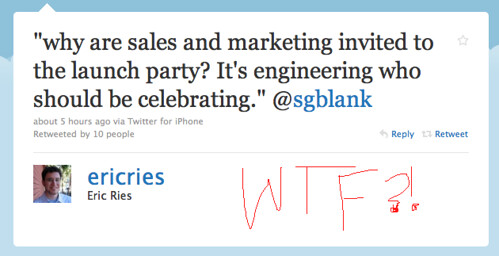
Treat Marketing as a 2nd Class Citizen, Get 2nd Rate Marketers
My first reaction was to feel at bit nauseous about all the startup founders and employees who are influenced by Eric Ries and his popular Lean Startup methodology for product and market development, and probably read this tweet. Â I feel like supporting this attitude encourages one of the most painful, costly, and damaging mistakes that was made at my last startup — and after thinking about it for a couple hours, I can’t not say something.
This isn’t ultimately about Steve’s quote, or Eric’s support of it, which I see as symptoms of the problem. It’s something I’ve wanted to write about for a long time because I experienced it firsthand in my previous startup and it was very damaging to the product, culture, and IMO ultimately the company.
This mentality of “developers before everyone else” is poisonous in startups, and it’s on the road to dangerous levels of hubris, and “pivoting”, or changing the direction of the business multiple times, due to a disconnected view of the world fueled by a Field of Dreams mentality (“if we build it they will come”).

Here’s why…
- Sales and marketing are helpful to have before launch, to make plans for achieving goals
- The greatest insult to a great product, and the people who created it, is to market it poorly
- To grow the business, cofounders need to trust marketing and sales to focus on things that the technical co-founders can’t or shouldn’t have to deal with on a daily basis
- To make great early marketing and sales hires it had better be “our startup” together, in spirit not just in equity stake.
- It’s not about the launch party, its about launching
Order of Operations
When a startup is founded, ideally the entire team is technical. Â There is probably someone who is the most business-minded, but not a dedicated sales or marketing person. Â If there is a non-technical member of the founding team, they’re probably (hopefully!) very deeply engaged in the product development aspect of the startup, and have earned the trust and respect of the engineer(s) co-founders.
Depending on the product and other market conditions, it is possible that the founding team of engineers will launch without anyone in sales or marketing at all, and their developer design and active use of social media will help them spread the word. Â This is exactly what happened with Twilio, which was launched in November 2008 without anyone whose entire job was to take the product to market.
If the product offering is compelling enough, or the cofounders are particularly interesting to the community, getting a TechCrunch story will require little more than a thoughtful email to the writers and a slide deck on Slideshare. Â This is the best case scenario, and in my opinion indicates a very well-rounded founding team with strong awareness of their market (business savvy) — even if their primary focus is building technology. Â However, after that initial burst of attention and activity there are many questions to be answered that have a more to do with building a business than building a product — like how to continue to gain and retain customers. Â This is where sales and marketing are helpful to have before launch, to make plans for achieving these goals.
Getting Past Day Zero
The launch of a new product is just the beginning of what will hopefully be a lasting and happy relationship with customers, press, analysts, and the marketplace in general. Â It is a moment of inflection and incredible stress for the entire organization, whether it is three people, thirty people, or three thousand plus. Â It is gloriously terrifying, and its something teams bond over.
- There is no question that the vision and actual act of creating of the product is what makes it all possible, and that the people who build things that have never existed before are some of the most amazing human beings on Earth. The greatest insult to a great product, and the people who created it, is to market it poorly. This is the core of how I approach marketing. Â Every day that I am spreading the word about Twilio, getting more people to signup, use, and pay for our product I’m honoring the ingenuity that created it, as well as the combination of intellect and execution that continues to make it better.
A Matter of Trust and Focus
When I interviewed I remember the exact moment I was sitting with Evan Cooke, CTO and one of three cofounders, and he offered me the opportunity to work at Twilio as their first hire. Â I looked him in the eye and told him, “I can do this job, but we have to agree that marketing will never become a second class citizen to software development”. Â I was actually afraid, for a moment, that I wouldn’t get the job but I told my husband later that I’d rather know right then what kind of company it was going to be than be miserable for the next year figuring it out. Â That was 18 months ago, and I’ve never ever felt for a moment that there was a disconnect between the engineering team and the marketing team, which now includes a customer service manager and two developer evangelists, in addition to myself.
One of the hardest lesson I’ve learned in business is that despite all my energy and intelligence, I can’t do everything by myself. Â Talented people making tough judgement calls aren’t fungible, and in general human beings don’t scale very well unless we can find other people to help us achieve complex and long range goals. Â The goal of a business is to organize a bunch of individuals to achieve a common goal, and properly celebrating achievements is a big part of keeping them organized. Â Fortunately, if we recruit well we can come to trust marketing and sales to focus on things that the technical co-founders can’t or shouldn’t have to deal with on a daily basis.
This initial division of labor within the startup seems to be a painful transition for technical cofounders — especially those who have never managed other people before. Â It becomes even worse because the cofounders are managing people who are experts in something the cofounder might not understand very well like sales or marketing. Â For the executive, it is harder for them to validate skills and expectations or pass judgement firsthand when they don’t have operating experience with a particular kind of role. Â This is where building deep trust, and fostering an open culture where the sales or marketing person is responsible for sharing and educating about how they’re achieving their goals is important. Â It’s also a strong case for objective metrics everyone can agree on, such as adoption numbers or revenue goals.
“You Attract What You Are” – Warren Buffett
I often read about developers who feel they’ve been made into lackeys by some MBA with an idea who wants the software engineer to “just code my startup”. Â It’s written with so much disgust. Â “How dare they undervalue what I bring to the table so much, or suggest that it’s their company and I’m just coding up the project?” Â Followed by, “what kind of developer would ever sign up for something like that?”
Flip this around for a moment. Â Do you think good, honest, hardworking non-technical employees are going to join your company if you tell them they’re there to “just market my startup” or “just do customer service for my startup” or “just sell my product”? Â To be good at any of those tasks, and especially to be the first person to say “I’ll follow you, take less salary, some equity that might not be worth anything, and work 24/7” you need to have ownership – it had better be our startup, in more than just an equity stake. Â You better mean it, because these people will be the human embodiment of your brand.
I love this quote from Warren Buffett, “you attract what you are” and I find myself reflecting on it often. Â I haven’t fully tested this, but I’d be curious to hear if it holds true — does a culture where writing code is considered the most important productive activity in the company attract marketers and salespeople who think their job is the most important thing in the company? Â Do people with a disconnected view of reality attract other people with an equally disconnected perspective? Â My gut says yes, although I could use some more data.
The corollary here is that if you are the kind of culture, or the kind of the founding technical team, that sees the launch of your first product as the groundwork for building a fully fledged successful business – you’ll attract early sales and marketing hires who want to be part of this long term vision. Â Here are some things I’d suggest you look for in your first marketing hire.
- wants to know how the product works
- is endlessly curious, and isn’t afraid to ask a lot of questions
- never has to be told the same thing twice
- will stay up all night while the engineering team races to ship
- is always thinking about how to simultaneously increase throughput and ROI, while decreasing operating expense (definition of “lean”)
- loves customers obsessively, and doesn’t have a cynical bone in their body
- knows when to be a bulldog
- is humble – for example, they would clean the bathrooms when they can’t afford a janitor
- understands the tradeoffs of time vs. money, and values both
- someone who is a logical decision maker and isn’t afraid to argue for what’s right, or back down if it’s not worth the fight
Great Marketer or Great Generalist?
You might have heard the adage “every startup needs a great generalist”. Â I’m not sure where it comes from, but it makes a lot of sense to me. Â Some of the hats I wore early on at Twilio to remove workload from the engineering team included: customer service department, recruiter, office manager, shipping/receiving, project manager, sales rep, product tester, PR agent, etc. Â That was so insanely fun, and we eventually hired people to take over these roles, but early-on it served two major purposes:
- run the company like a real business, achieving strategic goals
- make the dollars spent on non-engineering labor worth every penny, and more
The Company That Launches Together, Stays Together
To get back to the original comments that inspired this post, it’s not about the launch party, it’s about launching.
Your launch party is for show, usually to bring attention to your new product and group together all your well-wishers and potential customers so you can say, “ta da!” Â It’s a branding thing, and very different from that moment at 3am where you crack open a $4.99 bottle of sparkling wine you bought at Trader Joe’s and say to the team, “we’re live”. Â Or that moment at 2am where you find a member of your customer service pouring over every last detail of the freshly written FAQ. Â Or that moment at 11pm where you merge in your latest changes and your sales guy offers to run out and get pizza because the engineering team is starving but has hit on some nasty conflicts.
These aren’t the most important tasks, but they make launch just a little easier and they keep us human and connected through the exhaustion and struggle to build great products and companies. Â They do honor to the people and products that make startups possible.
Practice Makes Perfect
I didn’t start out my career as a marketer, and I’m sure I don’t have it all figured out, but I can tell you how I try to live by this at the startup I’m working on today.
At Twilio we have a culture where everyone contributes to customer service and the majority of developers attend marketing outreach events, speak at conferences, create marketing materials like screencasts or how-to content for our website. Â When we hire people for non-engineering roles, we require them to write a basic application using our API. Â With regard to sales, we take pride in making money, and openly share our revenue numbers and balance sheet with the entire team at our weekly all hands, and celebrate big sales wins together. Â We’re hiring.

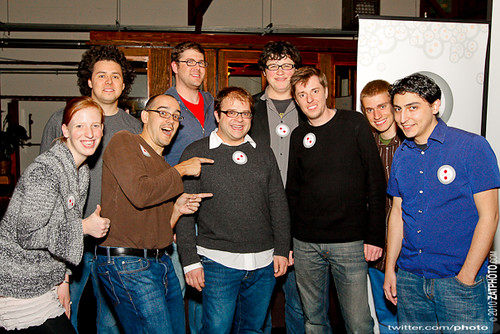

-
TweetToCall is Becoming a More Social Phone Book
My beloved side project TweetToCall recently turned one year old, and I’ve been procrastinating on re-styling it to look more like a Web 2.0 service and less like a weekend project. Â This post on TechCrunch tonight about the death of phone numbers motivated me to give it an hour of my time while playing Mario Cart with Kevin and digesting an awesome steak dinner I made for us. Â Because really, when else can I justify working on a side project these days?
The Changelog (Sort of)
I had updated the main page with this lovely style inspired by a cool piece of graphic art I bought on iStockPhoto, but still needed to refresh everything else. Â Tonight I went through and tested everything again to make sure it is all working. Â The signup process, phone number validation and listing of TweetToCall enabled friends have been reviewed end-to-end and I’m happy to report the code has aged nicely. Â I think we might be doing some inefficient things with API requests to Twitter on certain commonly reloaded pages (really need pagination for those users who are developing a bigger phone book), but that won’t impact the majority of users at this point. Â Definitely on the list though, since it drives me nuts when I’m testing.
As for the design update, all I have to say is CSS is amazing (there is knowing this and really KNOWING IT, I’m feeling the latter)… the time savings on this update after the previous were minimal. Â I updated the header, deleted a couple divs, and bam. Â While it’s still ugly (hey, I’m not a designer) it is a lot less offensive than before.
Other Improvement Plans
I’ve talked a lot about adding Facebook Connect as the next integrated social network, and now I’m thinking Firefox/Chrome plugins could be cool as well. Â Ultimately, I think I will probably move this all over to DialSocial.com where it will be much less Twitter centric. Â Other than a few media mentions from back when Jajah launched their @call feature almost a year ago, I don’t think I’ve accumulated much brand value, and having the Twitter account suspended endlessly makes it even easer to abandon the TweetToCall brand.
Another thing on my list is to get @tweettocall unbanned on Twitter, it has been stuck in that state for over a year now and I haven’t been able to get any responses to my support requests (this happened when my own Twitter account @daniellemorrill and @twilio got banned in a widespread block to try to control some malicious spam during the Gov 2.0 Summit in D.C.).
Why It’s Just a Side Project
Beyond the fact that I am super happily employed at Twilio (the voice API platform TweetToCall is built on), I just feel like there’s no point in really building this out and pumping a bunch of money into marketing it. Â There is a big barrier to getting users to sign up – getting them to give their phone numbers. Â Twitter, and to a lesser extent Facebook, have all their users and this is really just a feature they could easily implement. Â The one way I might be able to make it more valuable is to have more networks that you can hook into from a single place — but for now it just feels like a feature, not a full product and certainly not a company. Â If you feel differently, please let me know I’d love to hear your thoughts.
-
My Best Friend’s Wedding: The Startup
Update: No, it isn’t TweetToCall – although I love that project (yes, it still works and has a few thousand users now) and do think Twitter is going to become the new phone book. TweetToCall should be a feature of Twitter, and if anyone wants the code etc. I should just open source it.
You know that Julia Roberts movie where she doesn’t realize how much she’s in love with her best friend until he calls to say he’s getting married to someone else, and then falls off that bed? That’s how I feel about my startup idea getting founded and funded by someone else.
To be clear, I’ve probably had thousands of ideas for startups – but I’m a fan of failing fast and most of them have been crappy, or usually technically “cool” but not monetizable. That’s okay. But this idea was actually something I pitched in the few moments I had between leaving Whrrl and joining Twilio. It was something that nabbed me an offer to be an EIR with a reputable VC, which I was honored to receive but ultimately turned down. Most importantly, it was an idea that I am still obsessed with.
Today, I read that someone I know of and respect a great deal received some funding for this business, and is forming a company to execute on it. It haunts me. I know I’ll get over it, and I’ll be watching closely in the next year to observe how it goes as I consider whether or not it is the startup I’ll found someday. I can’t deny part of the pain is over not being first, but that is mainly pride. The rational part of me (or mercifully rationalistic) reminds myself that it may benefit me in the long run not to build a product in a consumer market that will require so much education. Time will tell.
Bottom line: the timing is wrong for me. I love my current company so much, and it is exciting, challenging, fun, growing, amazing — all the things we dream of when we talk about starting companies.
Ideas are a easy to come by, but ideas that you can imagine executing on for YEARS of your life are not. When I learned of Twilio I was immediately intrigued, and when Jeff approached me about joining the company I couldn’t say no. The alignment of market, team, and timing is undeniably awesome. Twilio is an idea I enjoy walking around inside of, thinking about constantly, living and breathing the brand. If I ever found a company as incredible, cohesive, and useful as Twilio I will have succeeded — so for now I’ll have to swallow this momentary pain, and look forward to the exciting future.
-
Reflecting on “Stuff”
As I make the move to the Bay Area, dealing with my “stuff” is a big thing. Going from a 4,000 square foot house to a 10′ by 12′ room in a friend’s apartment has been an adjustment both physically and mentally. But more interestingly, its lead me to reflect on all the stuff I have and what it really means to me. This Paul Graham essay on Stuff from 2007 also resonates with me.
The Story of My Stuff
In 2004 I purged everything I owned except for what would fit into the Land Rover I bought, and moved to downtown Seattle. That felt great, and being free of stuff also kept my mind free of clutter as I embarked on the beginning of my career. While I was making $9 as an hour, I had no money for buying anything except for the occasional professional clothing item or meal out with a friend. If I was spending money, it was on experiences.
By 2006 I was making good money, and dating the man who would become my husband. I had moved into a penthouse studio apartment and wanted to impress him (duh) with my taste, as well as enjoy the freedom of not having to conform to the tastes of a roommate. Ikea furniture, books I had been storing at my parent’s house, kitchen utensils, clothes, SHOES… the “stuff” began to accumulate, and soon the studio was feeling pretty cramped.
We got married in the summer of 2007 and moved into his bachelor pad, which had even less personal space than my studio. The cheap Ikea furniture had to go and once again my personal style was subordinated to someone else’s idea of “home” – which at the time was uber-sparse and uber-expensive (and uber-masculine) urban chic. I got rid of my car too, which was wonderful at first but later felt stifling, in favor of his Audi. In all, from a materialistic point of view my entire lifestyle was upgraded when our possessions became shared. All I really brought my ever-growing book collection, and enormous collection of designer shoes and fabulous clothes. For two newlyweds, this was a lot of stuff to manage.
So what did we do? We bought a bigger container for our stuff, in the form of a 4,000 square foot house in the suburbs. What started out as curiousity about what was on the market turning into me finding our dream house. We moved in on Halloween 2007, a mere 3 months after getting married. Our stuff began to expand again… we left all the furniture at the Seattle condo (we were renting it out) and took on a bunch of furniture from my parent’s house that they had been saving for us, as well as piano, 8 person dining room table, and new couches, bar stools, etc. AHHH! We were in stuff acquisition mode, shopping every weekend for stuff to make our not-so-little nest feel like a home.
And then the economy tanked.
I wish I could say that we’d been frugal with our acquisitions, but with Kevin’s job at Microsoft and my investments flying high we weren’t too concerned. I was working for a startup, making a startup income, but we were still a two income household without anyone depending on us. My walk in closet was stocked with fabulous outfits, I wore labels, and we threw dinner parties almost every week. While the market crashed we were in Las Vegas, treating my little sister to a memorable 21st birthday. Looking back, that was probably one of the best ways we spent money that year.
Traveling Sets Me Free of My Stuff
On Friday, I flew from SFO to Seattle with my most important “stuff”: my black Kate Spade purse, MacBook pro, iPhone, engagement ring and necklace my husband gave me for Valentine’s Day this year, my passport and some cash. I could have flown anywhere in the world and started my life from that moment in time with the items in that bag. That’s a pretty empowering thought, and lead me to think that the lack of “stuff” might be part of why people find travel so liberating – it certainly is for me.
What I’ve Learned: Buy Experiences, Not Things
Enabling great experiences and memories, shared with people I enjoy, is the most important leisure activity in my life. My rule of thumb now is that my “stuff” needs to enhance or enable experiences in some way, or it isn’t valid. Additionally, the more expensive the item (both in terms of money and amount of trouble I go to keeping it) it better generate lasting and repeat value.
Another important thing I’ve learned is that owning expensive things is great, but only if you use them. Each time you use them, its a part of the experience of owning something. If you know me, you know that I have a thing for expensive leather purses and shoes, and that’s because when I use/wear them the luxury and stylishness of the items creates an experience for me personally. I love that. It’s the same for things like owning silver and china, or crystal. Use it or give it to someone who will.
10 Things I Need to Travel the World
- Internet (Sprint mifi)
- iPhone & charger (Apple)
- MacBook pro & charger (Apple)
- jeans & a t-shirt
- expensive & indestructible purse (Kate Spade)
- expensive & durable/comfortable shoes (Tory Burch)
- all-in-one makeup kit (Lancome, buy it at the airport)
- passport
- cash (or access to cash via ATM card)
- my wonderful husband Kevin
-
We Launched – Check out Twilio SMS
I love when I can finally talk about something secret that I’ve been working on. Yesterday we launched Twilio SMS, a new API that makes it ridiculously simple (or as someone on Twitter said, “stupidly simple”) to send/receive text messages from Twilio numbers.
Here is the screencast we made to go with it – which I am very proud of 🙂
